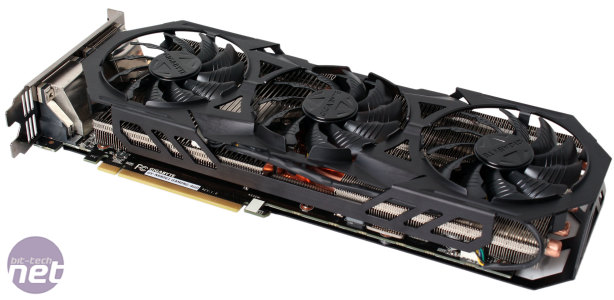
Performance Analysis
When we tested the GTX 980, it was undeniably fast, although it was beaten by a few fps in some tests by the GTX 780 Ti and/or GTX Titan Black. Not so once you factor in the factory overclock here; Gigabyte's card is ahead of every other single GPU card in the charts.The GTX 980 G1 Gaming has a 4fps higher minimum frame rate in Battlefield 4 at 1440p, which is a very good result. We also finally have a single GPU card that can maintain 30fps throughout the whole of this benchmark at 4K, though remember we don't use MSAA here. Maximum settings with the most demanding games is still very much dual-GPU territory at this resolution.
In BioShock Infinite Gigabyte adds 5fps to a minimum frame rate that was already very high – its result of 78fps is almost 40 percent ahead of the R9 290X, which isn't able to maintain 60fps here at 1440p. It's a smooth experience at 4K too with a 39fps minimum.
In Crysis 3, the card only adds 1fps to the reference result at 1440p. It's 2fps faster at 4K, but even so it's still unplayable, managing just 21fps. It's quite the opposite in Skyrim, however. The GTX 980 G1 Gaming misses out by just 1fps on reaching a buttery smooth 60fps minimum.
In Valley, the score increases over the reference card by 8 percent at 1080p and 11 percent at 1440p, where things are less CPU limited.
System power consumption reaches 349W using this card, 50W higher than we saw with the stock one. This figure is on par with what we saw when overclocking the stock card, however, so given the factory overclock, dual 8-pin sockets and upgraded power phases it's not surprising. It's also worth remembering that it's on par with the far less powerful R9 280X and lower than the GTX 780 Ti and R9 290X, significantly so with regards to the latter.
The temperatures are truly excellent. After our thermal load test, the GPU rose to a delta T of just 38°C, which is lower than even the GTX 750 Ti and a whopping 20°C below that of the stock cooler. The fans do spin up to audible levels, but we wouldn't describe them as noisy. There's clearly plenty of headroom for you to manually run them at lower speeds as well.
The frequencies we hit were certainly impressive when overclocking, but the improvements in benchmarks were less than we expected – between 5 and 11 percent. Also, the benefits compared to the results of the overclocked reference card are even slimmer. It beats it by just 1fps in Battlefield 4, doesn't surpass it in Crysis 3 and is only 5 percent ahead in Valley too. On the plus side, the fan speed and temperatures barely moved, and the power consumption peaked at 374W, which is still rather low given the performance on offer.
Conclusion
Nvidia's board partners are in a good position with the GTX 980. It's the fastest single GPU card available, so almost any variant is going to be worthy of envy and an awesome upgrade if you can afford it. Even so, Gigabyte's GTX 980 G1 Gaming is on the more expensive side of the selection, which means it has to deliver a lot. Thankfully, in almost every way, it does.It's very well built, offers greater display flexibility than the reference model and has upgraded power circuitry too. The factory overclock is generous but we've seen higher, and the card is certainly a potent overclocker. That said, in many cases you'll be able to squeeze out almost as much performance from a reference card, at least based on our own experience. The cooler is excellent too, offering significant improvements over the reference ones in terms of temperature at a slightly lower noise level. The downside is that it's 33mm longer as a result. There's also the issue of there not being a memory overclock by default. We do wish more partners would offer this, but it's not enough to stop the card being a worthy winner of our Extreme Ultra award. However, don't forget that you could just as easily save £70, get a reference model and in all likelihood be just as satisfied.

-
Performance39 / 40
-
Features29 / 30
-
Value18 / 30


MSI MPG Velox 100R Chassis Review
October 14 2021 | 15:04











Want to comment? Please log in.